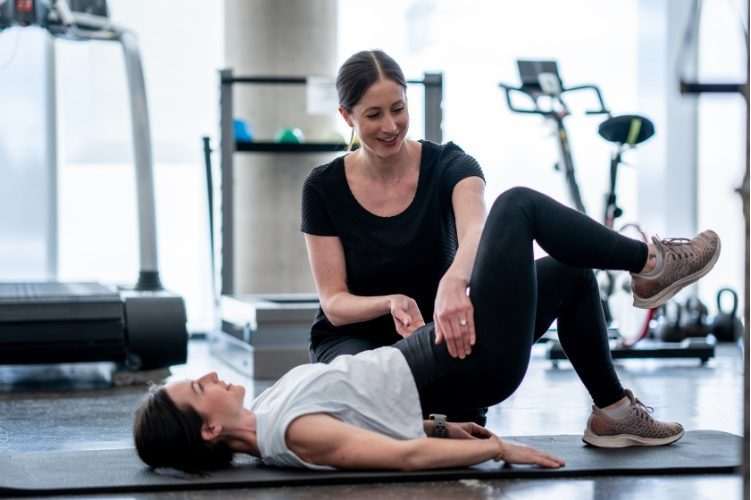From Kegels to breathwork, there are many ways to improve pelvic strength at home—here’s where to start.
No Gadgets. No Guesswork. Just Real Strategies That Work.
Let’s get one thing clear:
Pelvic floor strength isn’t just about doing Kegels on the couch.
It’s about learning how to activate, coordinate, and control one of the most important muscle groups in your body — the one that supports your bladder, bowel, core, posture, breath, and even sexual function.
At YFS (Your Form Sux), we’re all about helping you move better — not just harder. So if you’re dealing with leaks, core instability, pelvic heaviness, or you just want to get stronger from the inside out, this guide is for you.
Step 1: Learn What a Pelvic Floor Contraction Actually Feels Like
Before you do anything, you need to know how to find and fire the muscles.
Here’s how to connect with your pelvic floor:
For women:
Pretend you’re trying to stop pee mid-stream and hold in a fart — without clenching your butt.
For men:
Imagine you’re shortening your penis or lifting your scrotum gently — again, no butt squeezing.
👉 You should feel a lift from the base of your pelvis upward, with no breath-holding, no jaw tension, and no pushing.
⚠️ If you’re straining or can’t feel anything, you may need help from a pelvic physio to retrain the system — and that’s totally normal.
Step 2: Add Breathing — Your Secret Weapon
Your pelvic floor and diaphragm work together. That means breath = control.
Try this:
- Inhale through your nose: Let your belly and ribs expand (pelvic floor relaxes)
- Exhale slowly: Gently lift and contract your pelvic floor
Hold for 2–3 seconds, then relax fully before repeating.
Repeat for 8–10 reps. That’s one set.
This is your base-level training — like rehab for the deep core.
Step 3: Build a Consistent Routine (2–3x/day)
Start small — 5 minutes is enough.
Try this simple daily sequence:
- Breathwork with pelvic floor engagement (10 reps)
- Bridges with focused pelvic floor activation (10 reps)
- Side-lying clamshells or bird-dogs (add core & glute control)
- Posture resets: Seated or standing tall, breath in, contract on the exhale
The goal: build awareness and strength together.
It’s not just about squeezing — it’s about coordinating those muscles with how you move and breathe in real life.
Step 4: Progress It Like Real Strength Training
Once you’ve nailed basic control, it’s time to:
- Hold contractions longer (5–10 seconds)
- Add endurance sets (up to 10–15 reps)
- Integrate into daily movement: lifting, walking, stairs, etc.
Eventually, your pelvic floor should fire reflexively — you won’t have to think about it every time you move, cough, or laugh.
Bonus Tip: Strength Doesn’t Always Mean Tight
Not all pelvic floors are weak — some are tight, overactive, or stuck in “on” mode, especially in high-stress or athletic people.
Symptoms might include:
- Pain
- Constipation
- Incomplete emptying
- Leaking despite doing Kegels
👉 If this is you, skip the squeeze-heavy exercises and focus on relaxation, breath, and release techniques. A pelvic physio can help assess this properly.
Final Word: Strong Starts at the Bottom
Strengthening your pelvic floor is one of the best things you can do for your:
- Core control
- Posture
- Bladder confidence
- Athletic performance
- Long-term mobility
But it takes more than “do your Kegels.”
It takes awareness, breath, and progressive training — just like any other muscle group.
At YFS, we help people go from confused to confident about their pelvic health — whether you’re postpartum, lifting heavy, leaking during runs, or just ready to take control of your body again.
Want a personalized pelvic floor plan?
Book a private consult at YFS. We’ll show you how to build strength where it really matters — and fix the root, not just the symptoms.





